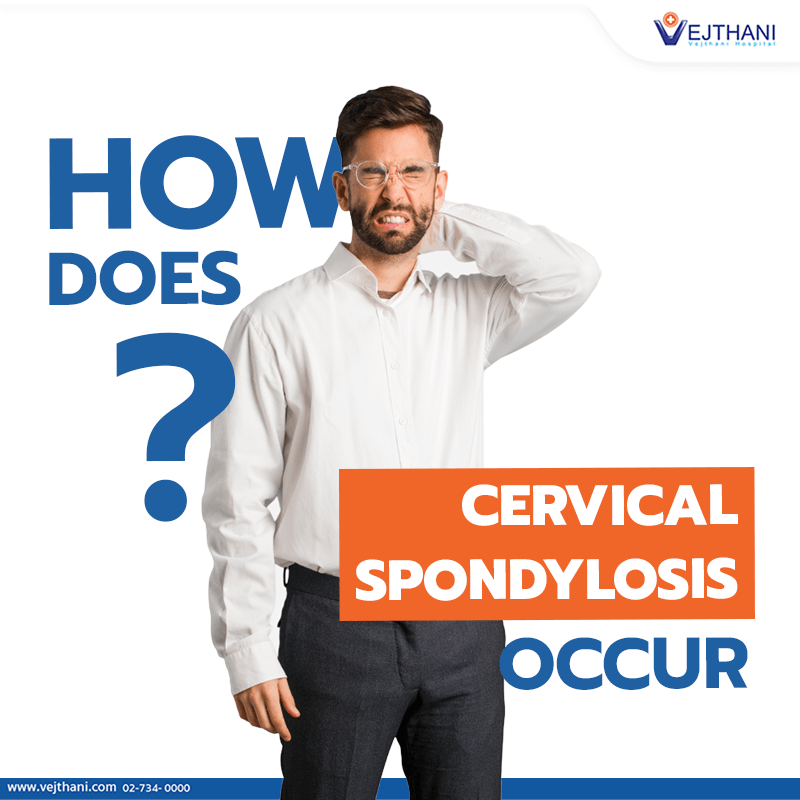Spinal Fusion: A Patient’s Guide to Surgery, Recovery, and Renewed Strength
Are you a candidate for a spinal fusion procedure? We’ll tell you what you need to know and how best to prepare for the surgery.

Cervical discs are crucial components of your neck’s anatomy, acting as cushions between the vertebrae and allowing your neck to move smoothly. Factors like age, injury, and poor posture can lead to disorders such as cervical spondylosis, a condition caused by the wear and tear of these discs.
Cervical spondylosis, commonly referred to as cervical osteoarthritis, involves the degeneration of the cervical discs and adjacent vertebrae. It’s often caused by chronic wear on the cervical spine, which can be accelerated by factors such as:
Over time, the spine structure may change, and the cervical discs may deteriorate. In addition, if cervical spine issues are left untreated, a calcified spine may form, causing bone spurs and increasing the risk of a herniated disc.
Cervical spondylosis can vary widely in severity, affecting each patient differently based on the extent of disc degeneration and the level of spine involvement. The severity of cervical spondylosis can be classified into three categories, which helps in determining the most appropriate treatment approach:
At Vejthani Hospital, understanding the degree of severity of cervical spondylosis is crucial to our treatment approach. Each patient undergoes a comprehensive evaluation that includes detailed imaging studies, such as MRI or CT scans, to accurately assess the extent of spinal degeneration and the impact on nerves and the spinal cord. Based on this assessment, our multidisciplinary team of spine specialists, physical therapists, and pain management experts collaborate to develop a treatment plan to reduce symptoms, improve function, and enhance quality of life.
Identifying cervical disc issues such as spondylosis in its earlier stages can significantly influence the treatment outcome. Early diagnosis allows for implementing preventive measures and less invasive treatments, which can effectively slow the progression of the condition and alleviate symptoms before they become severe.
We offer a spectrum of treatment options tailored to the severity of the condition and the patient’s specific needs. Conservative treatments for mild cases may include physical therapy, anti-inflammatory medications, and pain management strategies to alleviate symptoms and improve mobility.
For patients experiencing significant symptoms or those who have not responded to conservative treatments, minimally invasive surgery may be recommended
The minimally invasive techniques recommended for cervical spondylosis are as follows:
Microdiscectomy is a minimally invasive procedure that removes the portion of a herniated cervical disc pressing on spinal nerves through a small incision, typically under an inch long. Using a surgical microscope, the procedure offers enhanced precision, allowing the surgeon to navigate delicate structures while minimizing damage to surrounding muscles and tissues. This approach helps preserve spinal stability and typically results in less postoperative pain, a shorter hospital stay, and faster recovery compared to traditional open surgery. It is often recommended for patients who experience persistent nerve pain, numbness, or weakness that does not improve with conservative treatments.
Endoscopic discectomy is a minimally invasive surgical technique used to treat herniated cervical discs by removing the damaged portion that compresses spinal nerves. The procedure is performed through a small incision using a thin, flexible tube equipped with a camera (endoscope), which provides real-time visualization of the affected area. This allows for precise targeting of the herniated tissue while preserving surrounding structures. Compared to traditional surgery, endoscopic discectomy results in significantly less tissue disruption, reduced postoperative pain, minimal scarring, and a quicker return to everyday life making it a preferred option for patients seeking faster recovery with less downtime.
Cervical disc replacement is an advanced surgical procedure used to treat damaged or degenerated discs in the neck by replacing them with a specially designed artificial disc implant. Unlike traditional spinal fusion, which limits movement by permanently joining two vertebrae, disc replacement maintains the natural motion and flexibility of the cervical spine. The artificial disc is engineered to mimic the function of a healthy disc—absorbing shock and allowing for normal neck movement—while also reducing the risk of stress on adjacent discs. This approach is ideal for suitable candidates seeking pain relief with a quicker recovery and better long-term mobility.
Spine Center at Vejthani Hospital is staffed by top-tier specialists skilled in diagnosing and treating complex cervical disc issues. We utilize the latest diagnostic tools and surgical technologies to ensure precise treatments with optimal outcomes.
For more information, please contact
Spine Center, Vejthani Hospital
Call: (+66)2-734-0000 Ext. 5500
English Hotline: (+66)85-223-8888
